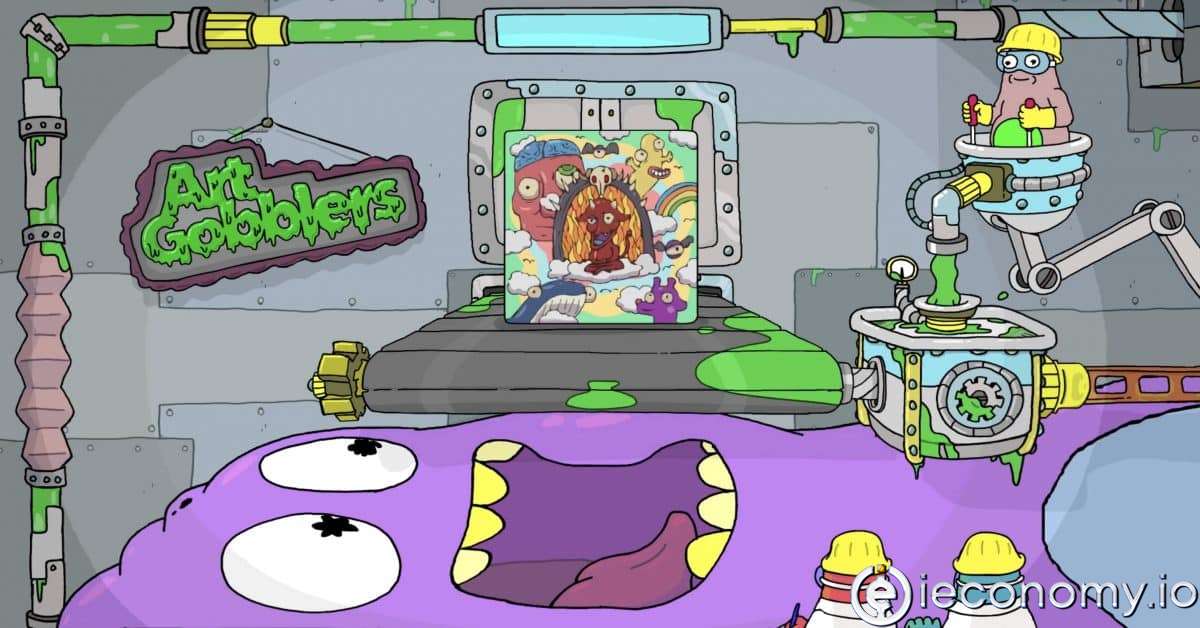3461
0
Rick and Morty Creator Releases Art Gobblers NFTs!
Art Gobblers, a collection created by television director and voice actor Justin Roiland with the support of Web3 startup Paradigm,

Yazar: Charles Porter
Yayınlanma: 2 Kasım 2022 04:28
Güncellenme: 11 Aralık 2025 04:05
Rick and Morty Creator Releases Art Gobblers NFTs!
Art Gobblers, a collection created by television director and voice actor Justin Roiland with the support of Web3 startup Paradigm, has launched. The collection quickly garnered millions of dollars in trading volume. The goal of the collection is to create a "decentralized art factory" using a combination of NFTs, a GOO token and community collaboration.
Justin Roiland's Collection Launched
Art Gobblers is live and rising on the secondary market. Designed by Justin Roiland and Paradigm, the collection was launched with excitement and admiration on October 31st at 20:20. The project was launched with a free mintage (users only need to pay a gas fee to secure their NFTs). Undisclosed NFTs are trading on secondary markets for tens of thousands of dollars. At the time of writing, the cheapest NFTs were trading for 12.5 ETH (worth $19,935) on OpenSea. Some pieces were also trading close to 15 ETH shortly after launch. Data from the recently launched NFT marketplace Blur shows that the collection has already accrued over 6,714.07 ETH ($10.4 million) in trading volume.How does Art Gobblers Work?
The initially available 1,700 NFTs and whitelisted addresses are accessible via the Art Gobblers website. 300 Art Gobbler NFTs are reserved for the creators of the project. However, the project plans to release another 8,000 NFTs over a 10-year period through its unique coin minting mechanism. Art Gobblers is designed as a factory NFT collection. This means that Gobbler NFTs will generate a token called GOO. The GOO token can be used to create new Gobbler NFTs or blank page NFTs. Blank sheet NFTs are used by artists as a digital canvas. They can also be later absorbed by Gobblers. Ownership of the art is therefore transferred to the NFT itself. Gobblers are set to become exchangeable, decentralized art galleries. However, Art Gobblers' tokens leave a lot to be desired as they reward early Gobbler holders at the expense of future buyers. Also, the more GOO a Gobbler has, the exponentially more GOO it emits. This gives the Art Gobbler whales the opportunity to create a monopoly over the economics of the art experiment. Follow Global Economic Developments on Social Media! Click here to follow Ieconomy official Facebook account! Click here to follow Ieconomy official Instagram account! Click here to follow Ieconomy official Twitter account!İLGİLİ HABERLER





European stocks soared and focus shifted to German retail sales after Powell's speech!

Forex Signal For TRY/USD: Inflation Slowdown in November.

Forex Signal For GBP/USD: Bullish Trend Still Not Breaking While Recovery Continues.

Forex Signal For EUR/USD: Starry US Data Points to Higher Fed Increases.

Forex Signal For BTC/USD: Downside Continues as Bitcoin Recovery Moves Less.
En Popüler Haberler
Yorum Yap
Yorumlar
Henüz yorum yapan yok! İlk yorumu siz yapın...